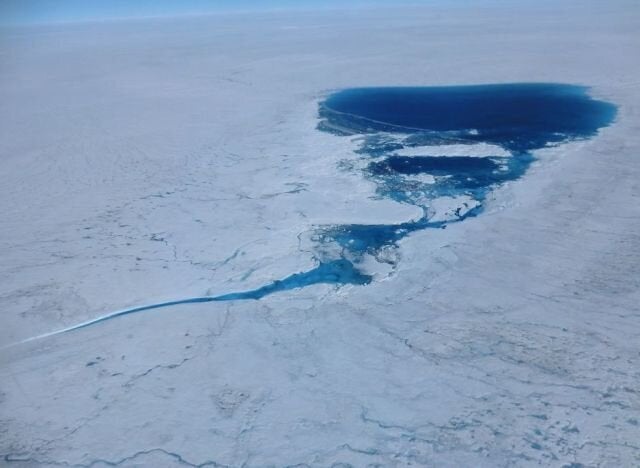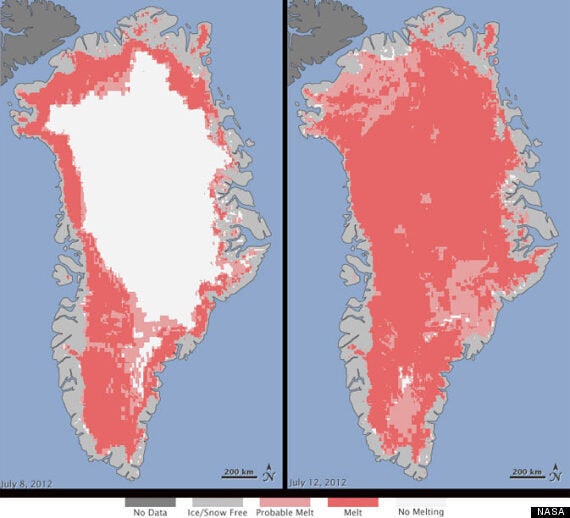The Greenland ice sheet is melting at its fastest rate since records began, boosting concerns over rising sea levels and the threat of global warming.
Accelerated melting of Greenland’s surface ice cover was once an exception but has now become the norm, according to scientists.
The speed of the latest thaw has broken records more than four weeks before the end of the “melting season” which traditionally lasts until early September.

A supraglacial lake over the Greenland ice sheet in the Kangerlussuaq area at 1500 m elevation. The lake feeds a stream that will deliver meltwater to the sea.
The new data signals a "goliath" year for ice melt in Greenland, said Professor Marco Tedesco, assistant professor of Earth and atmospheric sciences at The City College of New York, who carried out the research.
"With more yet to come in August, this year's overall melting will fall way above the old records."
"That's a goliath year – the greatest melt since satellite recording began in 1979," he added.

Lakes are pooling over Iceland's glaciers
Melts like this are predicted to change the face of southern Greenland, with the ice sheet thinning at its edges and more lakes on top of the country’s glaciers.
The latests measurements create an even more worrying picture than Nasa’s measurement of the speedy melt of Greenland’s ice melting in July.

The dramatic pictures released of Greenland's surface ice melting in July
The City College of New York data, collected by microwave satellite sensors, records the “cumulative melting index”, which accounts for water flowing to the ocean. The same meltwater can affect rising water levels by lubricating the base of the ice sheet and speeding its slide toward the sea.
Dramatic footage of ice melt from the Bridge over Watson River in Kangerlussuaq, Greenland
It follows Nasa's report that an estimated 97% of the ice sheet surface thawed at some point in mid-July, jumping dramatically from previous years. Professor Tedesco said the results were so shocking, it was like imagining Brazil's capital under a layer of snow.
"That event was exceptional in the sense that it was an extremely rare event," said Professor Tedesco. "Imagine Rio de Janeiro under a layer of snow and you get the idea."
However Laura Koenig, a Goddard glaciologist, confirmed in the same news release that this melting phenomena is thought to occur naturally on average every 150 years.

A satellite image provided by NASA in July shows calving, crescent-shaped crack at centre, on the Petermann Glacier in northwestern Greenland.
However researchers have not determined whether the extensive melt will affect the overall volume of ice loss this summer and contribute to sea level rise. Dr Thomas Mote, Professor of Geography at the University of Georgia, who worked alongside Tedesco said it was unlikely, saying:
"This changed the physical properties of the snowpack – making a slushy layer that turned into an icy crust after refreezing – but very likely it did not add to the runoff of meltwater that makes sea levels rise."
Tedesco said it was important not to panic over the dramatic results. "We have to be careful because we are only talking about a couple of years and the history of Greenland happened over millennia," cautioned Professor Tedesco.
"But as far as we know now, the warming that we see in the Arctic is responsible for triggering processes that enhance melting.
"Looking over the past few years, the exception has become part of the norm."